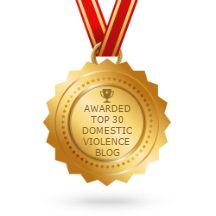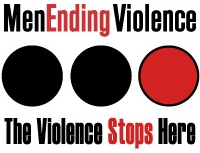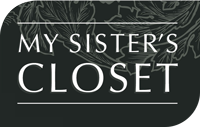Violence Against Women Roundtable
Facilitated by Angela Marie MacDougall – Battered Women’s Support Services
INTRODUCTION
Violence Against Women is the most pressing social issue of our times however it is often made invisible. It is a hidden epidemic of vast proportions and it is one of the most serious human rights violations in the world because over half the women in Canada confirmed to be impacted by violence. The issue of violence against women and male abuse of power and control are realities in our world. In 2000, according to the United Nations Commission on the Status of Women, globally at least one in three women and girls is beaten or sexually abused in her lifetime. According to Stats Canada 1993 report, in Canada alone, one in three women is a victim of assault by husband or male partner, with one in every five is assaulted during pregnancy. Statistics Canada reported in 2006, that in Canada almost 75 women are murdered at the hands of her partner each year and thousands live each day in fear.
INDIGENOUS WOMEN OF TURTLE ISLAND
In Canada, it is underestimated that 522 Indigenous women are missing or who have been found murdered since 1969 (some estimates suggest the number is as high as 3,000). In response to this crisis, many non government organizations are conducting research and spreading awareness both nationally and internationally such as the Amnesty International Stolen Sisters (2004) and No More Stolen Sisters (2009) reports.
Women’s organizations and feminists across Canada are calling for more governmental action and demanding that it must not be limited to the funding of research. They have been calling for a public inquiry into the hundreds of cases of missing and murdered women which over 300 remain unsolved to this day.
Women’s organizations are also requesting that the government provide anti-racist and anti-oppression training to all police forces so that police can be equipped to respond appropriately and investigate thoroughly when an aboriginal woman goes missing or is murdered.
In Vancouver, the February 14th Women’s Memorial March Planning Committee led by Indigenous women from Vancouver’s Downtown Eastside have put public pressure on the government. Walk for Justice is another example of action that has been taken so far, where people marched from East Vancouver to Parliament Hill to call for justice for over 3,000 missing and murdered women across Canada
NON-STATUS, REFUGEE, AND IMMIGRANT WOMEN
The level of violence against Non-Status, Refugee, and Immigrant women is a vast concern for woman’s organizations and for all community sectors that work with them. Non-status, Refugee and Immigrant women are continuing to having to navigate through a multitude of barriers and they continue to be disempowered:
a) through lack of opportunity for economic independence
b) by interfacing with service providers that do not have access to appropriate training and tools to deal with both their experience of violence and immigration experience.
c) attitudinal and behavioral discrimination in the community both mainstream and minority and
d) by gaps in laws and policies that govern their lives
(Maria Rosa Pinedo & Ana Maria Santinoli, 1991).
The role of police can be particularly threatening in some communities, especially those who come from countries where police are arresting, killing and torturing people. A woman will experience strong feelings of guilt and betrayal if she has to call the police in order to stop the violence. The community, again, is likely to play an important role in condemning the woman who called the police or went to court, if the man had been previously jailed or tortured in his country of origin.
BATTERED WOMEN’S SUPPORT SERVICES – VANCOUVER AND BRITISH COLUMBIA
Statistics Canada reported in 1993 that British Columbia has the highest rates of violence against women (59%).
In January 2010, 368 women accessed services at Battered Women’s Support Services (BWSS). Services included: victim services, support groups, legal advocacy, employment program and counselling, and over 500 women called the crisis line. Of the 368 women who accessed, 52% were of Immigrant status, Refugee, or Non-Status.
Vancouver is the second largest city in Canada with high percentages of people of colour and Immigrant populations. In 2006, 51 % of Vancouver’s total population identified as Immigrant an increase from 49% in 2001 and 44.8% in 1996 (The City of Vancouver website). This reality of violence against Non-status, Refugee, and Immigrant women is a grave concern for BWSS and service organizations across the province alongside the issue of missing and murdered Aboriginal women.
Overall, Aboriginal women and Non-status, Refugee, and Immigrant women have been silenced about their experiences of violence. In British Columbia, over 10,000 incidents of violence against women in intimate relationships were reported in 2009. Currently, provincially, there are under 670 transition house beds available to women and their children being abused. Proposed government cuts of $440,000 to those services were reversed after a public outcry, but a $1.2-million reduction in budgets and other disruptions to transition houses and victim services programming is still proposed for 2011-12.
Battered Women’s Support Services in partnership with other women’s groups is trying to help the government understand that part of the solution is making transition houses and violence-prevention workers a strong part of the victim-referral support system, instead of relying on underfunded groups which are always fighting cutbacks. By working together, as a community, as an organization, we can all help the fight against this ongoing issue that haunts so many women’s lives.
THE VIOLENCE STOPS HERE – URGING MEN TO OWN THEIR ROLE
Presently, men are the primary perpetrators of violence against women and the majority of men are silent when it comes to speaking out about violence against women. This code of silence contributes significantly to the problem.
Police and Crime Summary Statistics for B.C. in 2000 indicate that.
- 10,121 incidents of spousal assault were reported.
- 78.2% of the accused were males.
- 12.9% of the accused were females.
- 8.9% of reports involved both spouses assaulting each other.
According to the Canadian Crime Statistics, 2000 report:
Male on female violence accounted for the majority (46.5%) of all violent crime in Canada.
- 37.8% was attributed to male on male violence.
- Female on female crime – where women were both the accused and the victim – accounted for 8.1% of the total.
- Female on male violence accounted for the lowest percentage of all violent crime in Canada at 7.6%.
DISCUSSION
At every level of our society in all corners of the globe there is an overwhelmingly lack of acknowledgement and lack of response. Feminists, specifically, and women anti-violence workers, in general, have been leading the anti violence movement and as a direct result of this there has been some progress. One change of note, that now more than in any time women are leaving abusive relationships.
What future directions and action needed to end Violence Against Women?
Please click here for the PDF handout.




